#Edward McClelland
Link
Los Angeles is one of 88 separate but overlapping municipalities in L.A. County. Places we think of as towns (Hollywood) are actually just neighborhoods, while places that sound like neighborhoods are cities (West Hollywood). This is not to be confused with Greater Los Angeles, often called the Southland, five far-flung counties in Southern California jury-rigged into a single cultural unit. Here, the very idea of “place” feels abstract. It may explain why L.A. attracts so many clichés: In a place so immeasurable, so mega, stereotypes are an easy way for people to get a grasp on it, especially if they live somewhere else.
One of those zombie tropes is that Los Angeles isn’t a walking city. Actually, Los Angeles is a fantastic walking city. Exploring it on foot is how I started to make sense of things.
This, about walking the 27 miles of Rosecrans Avenue, reminded me of John Greenfield’s account of walking the approximately 24 miles of Western Avenue in Chicago.
I’m not able to find that Chicago story online now and I don't remember for sure where it was published, but I did find it mentioned in his account of walking Halsted Street. In my search, I also found Greenfield’s accounts of walking Cermak Road and walking Madison Street as well as more of his accounts of walks.
I also rediscovered Christopher Silber’s 2020 account of walking Western Avenue in four segments over four days and the 2016 story of Steve Mosqueda and Sean Benjamin doing the walk over three days and having “at least one pint at every single bar”—64 of them!—along the way. There’s a documentary of this noble quest:
vimeo
These longest streets, apparently Western Avenue in particular, hold some special allure. Just last year, Edward McClelland wrote about traveling Western Avenue from north to south by Divvy e-bike for Chicago Magazine.
#Rosecrans Avenue#Los Angeles#walking#pedestrians#cities#Chicago#Western Avenue#Halsted Street#streets#John Greenfield#Christopher Silber#Steve Mosqueda#Sean Benjamin#bars#Edward McClelland#Divvy#e-bikes#city walks
1 note
·
View note
Text
happy Masters of the Air release week. In honour of the series due to release on the 26th, I wanted to list a few faces we’ll be seeing throughout the series. I want to particularly note the crewmen of the 100th in hopes this makes sense to viewers who either a) didn’t have time to read any books based on the 100th bomb group, or b) want to read Masters of the Air by Donald L. Miller during/after the tv show aires. My lovely friend on tumblr @kylaym was happy to message me on instagram regarding who’s who for most of the 100th bomb group posts. She gets that everyone in uniform looks the same; same haircut, moustaches, masks, everywhere, etc. She mentioned it is always better to remember a bunch of lads as groups and crews than as individuals!
Here we gooo..
Colonel Neil “Chick” Harding
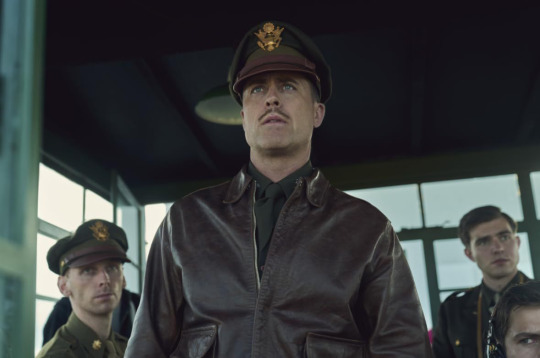
A West Point graduate and the school’s football coach prior to the war. Harding was a seasoned aviator who truly emulated much of the 100th’s attitude. He exhibited an appreciation for his crew’s mental and emotional well-being.
Major John C. “Bucky” Egan and Major Gale “Buck” Cleven
Two of the squadron commanders, Majors John “Bucky” Egan of the 418th Bomb Squadron and Gale “Buck” Cleven of the 350th, had piloting skills which matched their personalities. (Found top row 3rd and 4th members from left to right).

Captain John D. Brady
He served as a pilot in the 418th bomb squadron and was shot down during the mission to Munster on October 10th, 1943. (Shown here on the far left). He flew overseas in A/C #42-30071 “Skipper” as 1st Lt. Pilot. 2nd Lt’s being Lt. John L. Hoerr [Co-Pilot] and Lt. Harry Crosby [Group Navigator and Captain].
M/Sgt. Kenneth A. Lemmons
He served on the 351st Bomb Squadron and was one of the first crew chiefs assigned to the 100th Bomb Group. After being a part of the U.S. Air Force's ground crew, he was subsequently promoted to the position of flight chief. (Shown above in the front).
Harry H. Crosby
Harry served as a navigator in the 418th Bomb Squadron and later became Group Navigator for the Hundredth, however, his struggle with airsickness often hindered his ability to navigate. (Found above beside Brady on the right). Harry Crosby replaced Lt. Payne on the crew of Douglass.

Payne is found above on the right, beside Harry Crosby.
Lt. Howard B. “Hambone” Hamilton
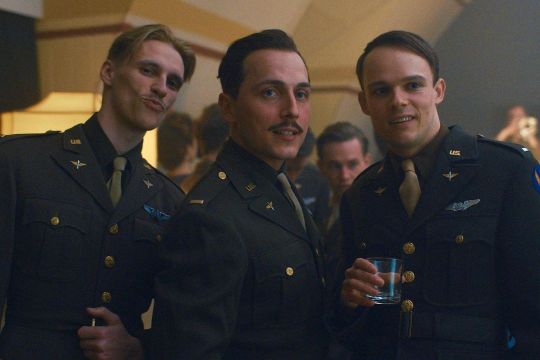
He was a bombardier mostly known for flying with Brady’s crew.
On the October 10th Munster mission, crew #32 was led by Major John C. Egan as Co-Pilot. Near the initial point “Mlle Zig Zig” was hit by Flak, resulting in the following:
- Sgt Clanton passing away
- wounding Howard Hamilton and Roland Gangwer. (Both ended up spending a long time in the hospital).
- the surviving crew members bailed out but were taken prisoner.
Hamilton is seen above on the far left. Beside him on the left is Lt. James Douglass and Captain Frank Murphy.
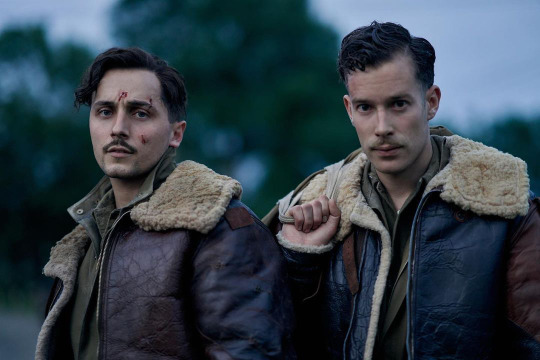
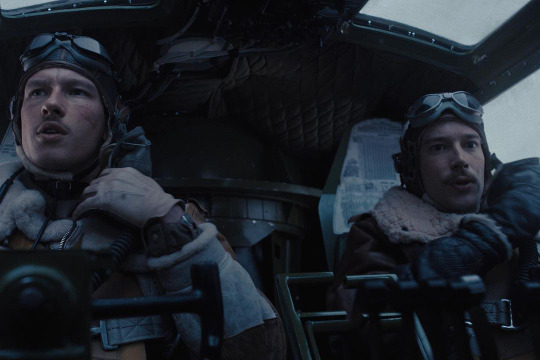
Captain James Douglass
Served as a bombardier in the 418th Bomb Squadron with the Everett Blakely crew. (Seen above in the first picture beside Blakely).
Major Everett E. Blakely
Was a career officer of the United States Air Force. He was a highly decorated pilot of the B-17 bomber with the Bloody Hundredth Bombardment Group of the 8th Air Force. He is most commonly known for his crew’s plane “Just a Snappin”. On a mission to Bremen on October 8th, 1943, his plane was severely damaged by flak and enemy fighters. He later became the Group Training Officer (Shown above on the right and next to Major John Egan in the second picture above).
Blakely’s Crew:
Major John Kidd- Command Pilot
1st Lt. Everett Blakely- Pilot
2nd Lt. Charles Via- Formation Officer in the tail (SWA on the mission during Black Week)
1st Lt. Harry Crosby - Navigator
2nd Lt. James Douglass - Bombadier
T/Sgt. Edmund Forkner - Radio operator
S/Sgt. William McClelland - Ball Turret Gunner (WIA on the Black Week mission)
S/Sgt. Edward Yevich - Waist Gunner (WIA on the Black Week mission)
S/Sgt. Lyle Nord - Waist Gunner
S/Sgt. Lester Saunders - Tail Gunner (KIA on the Black Week mission)
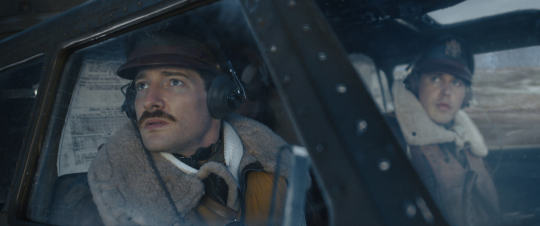
Lt Roy Claytor
Roy Claytor was part of the 350th Squadron. Above, he may be flying as a command pilot in this mission or practice with the Claytor Crew.
He is seen above on the left, beside Cleven.
Major Robert 'Rosie' Rosenthal
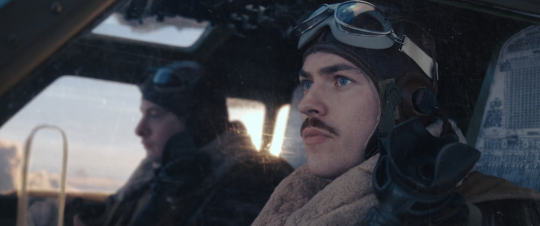
Rosie joins the unit in late 1943. He becomes one of the 100th's most reliable pilots.

Rosenthal's Crew:
[Shown left to right; top row than bottom row]
Sgt. Loren Darling - Waist Gunner
Sgt. Michael V. Boccuzzi - Radio Operator/Gunner
Sgt. John H. Shaffer - Waist Gunner
Sgt. Clarence C. Hall - Top turret gunner/engineer
Sgt. William J. DeBlasio - Tail Gunner
Sgt. Ray H. Robinson - Ball Turret Gunner
Lt. Ronald C. Bailey - Navigator
Lt. Robert 'Rosie' Rosenthal - Pilot
Lt. Clifford J. Milburn - Bombardier
Lt. Winifred 'Pappy' Lewis - Copilot
Lt. Curtis Biddick

Lieutenant Curtis Biddick was known as a ‘hard luck’ pilot but was recognised as exceptionally expert and courageous. ‘Every time he went out something seemed to happen,’ said one of his buddies. On one raid he brought his plane back with 1,700 shell and bullet holes in it and two wounded men aboard.
He clashes due to his English colleagues embarking on night-time raids.
Richard Snyder
Biddick's co-pilot and was part of the 418th Bombardment Squadron.
Okay.... So I truly hope this helps going into Masters of the Air tomorrow. I can't wait to see all the bomber boys spread their wings and fly. This tv series is going to be an absolute wreck (in the best way possible). Thank you to everyone who enjoys my posts. Love y'all.
#hbo war#masters of the air#austin butler major gale buck cleven#austin butler masters of the air#callum turner#john egan#barry keoghan#@mads-weasley
89 notes
·
View notes
Text
Since there's an interest in strikes and labor activities and whatnot, and people might want some books to read, here's a short list of books I have enjoyed:
Midnight in Vehicle City by Edward McClelland
Reuther by Frank Cormier
On a Clear Day You Can See General Motors by Patrick J Wright [DeLorean biography]
There is Power in a Union by Philip Dray
The Devil is Here in These Hills by James Green
Which Side Are You On by Thomas Geoghegen
Only One Thing Can Save Us by Thomas Geoghegen
Strike! by Jeremy Brecher
Blood Passion by Scott Martelle
From Blackjacks to Briefcases by Robert Michael Smith
The Blue Eagle At Work by Charles J Morris
The DeLorean biography isn't really labor related, but it is an interesting look inside a major corporation.
14 notes
·
View notes
Text
America's greatest twentieth-century invention was not the airplane, nor the atomic bomb, nor the lunar lander. It was the middle class. We won the Cold War not because of our military strength, but because we shared our wealth more broadly than the communists and, as a result, had more wealth to share. The communists boasted of creating a workers' paradise in the Soviet Union, but Michiganders lived in the real thing: two cars in every driveway, summer cottages, and deer hunting trips Up North. So much of that, inside the auto industry and out, was the result of victories won by the United Auto Workers.
As the unions saw it, the labor movement overthrew an economic order in which the mass of humankind had been born with saddles on their backs, to be ridden by a booted and spurred aristocracy, an order in which the many toiled to provide pleasures for the few. Collective bargaining made obsolete the iron law of wages, which stated that labor could command no more than a subsistence living from capital. It made obsolete the notorious marketplace known as "bidding at the factory gate," in which workers offered their services for ten cents an hour, only to lose the job to a more desperate man who offered nine.
- MIDNIGHT IN VEHICLE CITY: General Motors, Flint, and the Strike that Created the Middle Class (2021) by Edward McClelland
#Amazon #collective bargaining #labor union #sit-down strike #Starbucks
9 notes
·
View notes
Text
In 1960, Englewood had 67,216 African American residents who made up about 69% of its population. At the time most African Americans resided around 63rd Street. At the time the median income of Englewood was $5,579 ($51,102.13 according to inflation).[14]
By 1980, the total population was 62,069, a loss of about 30,000 people in two decades; 99% of the people were black, and the white population was down to 818.[14] Edward McClelland of NBC Chicago stated "Not even ethnic cleansing in the Balkans achieved the levels of turnover that white flight in Chicago did."[15]
8 notes
·
View notes
Text
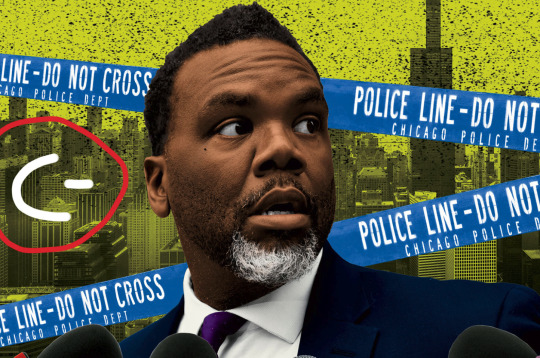
Gluekit for Chicago Magazine, 2024
"Grading the Mayor's First Year," by Edward Robert McClelland
0 notes
Text
0 notes
Video
vimeo
FORD F-150 RAPTOR R - SCARY FAST from Brunch Club Creative Studio on Vimeo.
CLIENT: Ford
AGENCY: W+K NEW YORK
EXECUTIVE CREATIVE DIRECTOR: Karl Lieberman
GROUP CREATIVE DIRECTORS: Eric Helin, Stuart Jennings COPYWRITER: Jake Thompson
ART DIRECTOR: Alex McClelland
DESIGNER: Henry Jinings
DESIGNER: Malithi Gunawardena
HEAD OF INTEGRATED PRODUCTION: Nick Setounski
EXECUTIVE PRODUCER: Jessica Griffeth
SENIOR PRODUCER: Alexander Kramer
PRINT PRODUCER Blake Harmon
GROUP ACCOUNT DIRECTOR: Mike Welch
ACCOUNT DIRECTOR: Phil Pennington
ACCOUNT SUPERVISOR: Caroline Schwartz
ACCOUNT EXECUTIVE: Terrance Woodall
STRATEGY DIRECTOR: Newman Granger
STRATEGIST: Hannah Kratky
SENIOR SOCIAL STRATEGIST: Liana Holland
MEDIA & COMMS DIRECTOR: Geoff Scoones
MEDIA & COMMS PLANNER: Carly Lissak
SENIOR PROJECT MANAGER: Nicole Formisano
PROJECT MANAGER: Chantal Kharas
DIRECTOR OF BUSINESS AFFAIRS: Karen Murillo
BUSINESS AFFAIRS: Nestor Gandia
TRAFFIC: Sonia Bisono
PRODUCT INFORMATION SPECIALIST: John Bonacquisti
PRODUCTION COMPANY: Greenpoint Pictures
DIRECTOR: Lauren Sick
DIRECTOR OF PHOTOGRAPHY: Logan Triplett
EXECUTIVE PRODUCER: Tatiana Rudzinski
EXECUTIVE PRODUCER: Trevor King
HEAD OF PRODUCTION: Karen Berkowitz
OWNER: Michael Kuhn
LINE PRODUCER: Steve Oare
PRODUCTION MANAGER: Andrew Peterson
VFX COMPANY: THE MILL
PRODUCER: Edward Rilli
ASSOCIATE PRODUCER: Cath Daly
VFX SUPERVISOR: James Allen
CREATIVE DIRECTOR: Jimmy Bullard
TELECINE: Ethos Studio
COLORIST: Dante Pasquinelli
COLOR PRODUCER: Sam Cesan
EDIT/POST: Rock Paper Scissors
MANAGING DIRECTOR: Eve Kornblum
EXECUTIVE PRODUCER: Justin Kumpata
PRODUCERS: Taylor Colbert, Shayna Rubin
EDITOR: Akiko Awakawa
EDITOR: Aaron Tompkins
ASSISTANT EDITORS: Tom Mika, Kathryn Lenihan
COMPOSER: Nathaniel Eras
TITLES: Brunch Club
SOUND DESIGN: Henry Boy
SOUND DESIGNER: Bill Chelsey
EXECUTIVE PRODUCER: Kate Gibson
MIX: Sonic Union
EXECUTIVE PRODUCER: Justine Cortale
AUDIO ENGINEER: Steve Rosen
AUDIO ENGINEER: Julienne Guffain
0 notes
Video
vimeo
FORD F-150 RAPTOR R - SCARY FAST from Brunch Club Creative Studio on Vimeo.
CLIENT: Ford
AGENCY: W+K NEW YORK
EXECUTIVE CREATIVE DIRECTOR: Karl Lieberman
GROUP CREATIVE DIRECTORS: Eric Helin, Stuart Jennings COPYWRITER: Jake Thompson
ART DIRECTOR: Alex McClelland
DESIGNER: Henry Jinings
DESIGNER: Malithi Gunawardena
HEAD OF INTEGRATED PRODUCTION: Nick Setounski
EXECUTIVE PRODUCER: Jessica Griffeth
SENIOR PRODUCER: Alexander Kramer
PRINT PRODUCER Blake Harmon
GROUP ACCOUNT DIRECTOR: Mike Welch
ACCOUNT DIRECTOR: Phil Pennington
ACCOUNT SUPERVISOR: Caroline Schwartz
ACCOUNT EXECUTIVE: Terrance Woodall
STRATEGY DIRECTOR: Newman Granger
STRATEGIST: Hannah Kratky
SENIOR SOCIAL STRATEGIST: Liana Holland
MEDIA & COMMS DIRECTOR: Geoff Scoones
MEDIA & COMMS PLANNER: Carly Lissak
SENIOR PROJECT MANAGER: Nicole Formisano
PROJECT MANAGER: Chantal Kharas
DIRECTOR OF BUSINESS AFFAIRS: Karen Murillo
BUSINESS AFFAIRS: Nestor Gandia
TRAFFIC: Sonia Bisono
PRODUCT INFORMATION SPECIALIST: John Bonacquisti
PRODUCTION COMPANY: Greenpoint Pictures
DIRECTOR: Lauren Sick
DIRECTOR OF PHOTOGRAPHY: Logan Triplett
EXECUTIVE PRODUCER: Tatiana Rudzinski
EXECUTIVE PRODUCER: Trevor King
HEAD OF PRODUCTION: Karen Berkowitz
OWNER: Michael Kuhn
LINE PRODUCER: Steve Oare
PRODUCTION MANAGER: Andrew Peterson
VFX COMPANY: THE MILL
PRODUCER: Edward Rilli
ASSOCIATE PRODUCER: Cath Daly
VFX SUPERVISOR: James Allen
CREATIVE DIRECTOR: Jimmy Bullard
TELECINE: Ethos Studio
COLORIST: Dante Pasquinelli
COLOR PRODUCER: Sam Cesan
EDIT/POST: Rock Paper Scissors
MANAGING DIRECTOR: Eve Kornblum
EXECUTIVE PRODUCER: Justin Kumpata
PRODUCERS: Taylor Colbert, Shayna Rubin
EDITOR: Akiko Awakawa
EDITOR: Aaron Tompkins
ASSISTANT EDITORS: Tom Mika, Kathryn Lenihan
COMPOSER: Nathaniel Eras
TITLES: Brunch Club
SOUND DESIGN: Henry Boy
SOUND DESIGNER: Bill Chelsey
EXECUTIVE PRODUCER: Kate Gibson
MIX: Sonic Union
EXECUTIVE PRODUCER: Justine Cortale
AUDIO ENGINEER: Steve Rosen
AUDIO ENGINEER: Julienne Guffain
0 notes
Quote
In a recent survey, 24 percent defined the American dream as “not being in debt.” They’re not trying to get ahead. They’re just trying to get to zero.
Edward McClelland
2 notes
·
View notes
Text
CEX Reveals its May 2022 Releases
CEX Reveals its May 2022 Releases #Comics #ComicBooks
THE MACABRE MOTEL (ONE SHOT)
Frank Martin (A) Alper Gecgel (CA) Ryan Lee, Ryan Kroboth, Luke CooperDiamond: FEB221347 / FEB221348 / FEB221349Lunar: 0122CX239 / 0122CX240 / 0122CX241
Writer/creator Frank Martin welcomes you to The Macabre Motel, a Twilight Zone-inspired weird horror story that will leave you feeling deeply unsettled long after the final page!
Anxious about meeting his…

View On WordPress
#alper gecgel#cex#cex publishing#comic books#Comics#comics experience publishing#frank martin#gannon beck#honcho#jeff mcclelland#jeff mccomsey#jody edwards#louie joyce#luke cooper#past the last mountain#paul allor#ryan kroboth#ryan lee#the macabre motel
2 notes
·
View notes
Photo

EDWARD MCCLELLAND
March 5, 2017 - 2:00pm
Prairie Lights
Edward McClelland will talk about How to Speak Midwestern, his witty and informative guide to the speech patterns of the people in the flyover states.
2 notes
·
View notes
Text
Idk where my ‘if the strikes have gotten you interested in labor history’ reading list went so here it is again.
Midnight in Vehicle City by Edward McClelland
Reuther by Frank Cormier
There is Power in a Union by Philip Dray
The Devil is Here in These Hills by James Green
Which Side Are You On by Thomas Geoghegen
Only One Thing Can Save Us by Thomas Geoghegen
Strike! by Jeremy Brecher
Blood Passion by Scott Martelle
From Blackjacks to Briefcases by Robert Michael Smith
The Blue Eagle At Work by Charles J Morris
Working in the Shadows by Gabriel Thompson
Other books for lesser known bits of American history:
American Midnight by Alex Hochschild [plenty of labor history]
The Color of Law by Richard Rothstein
Days of Rage by Bryan Burrough
There’s Something Happening Here by David Cunningham
White Trash by Nancy Isenberg
The Plutonium Files by Eileen Welsome
Honorable mention:
On a Clear Day You Can See General Motors by Patrick J Wright, a biography of John DeLorean's time at General Motors.
2 notes
·
View notes
Text
David Leonhardt writing in this morning’s New York Times:
A voluntary tax
It’s been a back-and-forth struggle over the course of American history: How much tax should the wealthy pay?
In colonial times, parts of the North taxed the rich more than Europe did, with Massachusetts going so far as to enact a wealth tax that covered financial holdings, land, jewelry and more. Southern colonies, by contrast, kept rates low and collection ineffectual, to prevent taxes from undermining slavery by eroding the wealth of slaveholders.
After the country’s founding, the low-tax advocates generally won out — until the 20th century, when soaring inequality, two wars and the Great Depression led Washington to create the world’s most progressive tax system. Then the situation flipped again, and top tax rates have plummeted over the last few decades.
Yesterday, the news organization ProPublica published a scoop, based on the tax returns of thousands of wealthy Americans, including Jeff Bezos, Warren Buffett, Bill Gates, Rupert Murdoch, Elon Musk and Mark Zuckerberg. An anonymous source sent ProPublica the material after the organization had published articles about the I.R.S.’s lax enforcement of taxes on the wealthy. (Here’s ProPublica’s explanation of why it decided to publish the new story, despite privacy concerns.)
The tax returns offer details on a story that has long been clear: The wealthy now pay strikingly low tax rates.
To take one example, Bezos’s wealth soared by $120 billion from 2006 to 2018, and his federal taxes during that time amounted to only 1.09 percent of the wealth gain. The situation for the average household was radically different: Its taxes amounted to more than 100 percent of its wealth increase.
‘Buy, borrow, die’
A central reason that very wealthy people can avoid taxes is that the U.S. system taxes only so-called realized gains — like wages or stock sales. But the wealthy often live off unrealized gains — in the form of stocks and other assets that grow more valuable over time. The wealthy borrow against these assets to pay for houses, islands and private planes and then use a variety of strategies to avoid paying taxes on the debt repayment.
One such strategy is waiting until after death to repay the loan — or what Edward McCaffery, a tax expert at the University of Southern California, calls “buy, borrow, die.” Robert McClelland of the Tax Policy Center called it the main revelation of the ProPublica story.
All the while, the wealthy are often able to keep their taxable income low. In 2011, Bezos reported so little income that he qualified for — and claimed — a $4,000 child tax credit. In both 2016 and 2017, Carl Icahn, who’s a billionaire, paid no federal income taxes.
Legal tax avoidance by the wealthy has become more widespread over the past half-century for several reasons. For one, inequality has soared, meaning that the rich have more wealth to protect. And tax rates have fallen significantly.
“It’s amazing how much we’ve cut taxes even since 1997 — on dividends, the estate tax threshold, capital gains and the top rate,” Owen Zidar, a Princeton University economist, told me. “All of those things have become more favorable to the top of the distribution.” The decline in the corporate tax rate — effectively a tax reduction for shareholders — has also been important.
You sometimes hear the cynical view that raising taxes on the wealthy is pointless, because they have the resources to evade any taxes the government tries to impose. But history suggests otherwise.
While some tax avoidance is inevitable, the federal government has largely succeeded in raising taxes when it has tried. The very richest Americans paid more than 50 percent of their income in federal taxes during the 1950s and ’60s (and were less successful at shielding their wealth from taxation). Today, that percentage has fallen below 30 percent.
There are three main ways to reverse the decline in tax payments by the wealthy, Gabriel Zucman of the University of California, Berkeley, said. One is a direct tax on wealth, like those proposed by Senators Bernie Sanders and Elizabeth Warren. Two is a tax on unrealized gains — assets that have become more valuable — as Senator Ron Wyden of Oregon has proposed. Three is an increase in corporate taxes, as President Biden favors. There are also more modest ideas, like a larger estate tax.
Societies can choose how much they do or don’t tax their wealthiest people, Zucman said. “For billionaires,” he added, “the federal income tax — the pillar of the U.S. tax system — has become a voluntary tax.”
Reactions to the story
Michael Linden, Biden administration official: “We already knew that some of the biggest corporations pay no income tax. Now we know that some of the wealthiest people can also get away with paying no income tax. Time for reform.”
Binyamin Appelbaum, New York Times Opinion: “The wealthy are living by a different set of rules, lavishly spending money that isn’t taxed as income.”
Jody Avirgan, podcast host: “There’s already a jaded take emerging around the ProPublica IRS reporting, along the lines of ‘what’s the scandal, this is all stuff that any rich person or financial journalist already knew about.’ But, like, that’s the point!”
Megan McArdle, The Washington Post: “I thought the ProPublica analysis of billionaire taxes was going to be exciting. Instead, it told me things I already knew. … The most exciting thing is wondering who gave them the information, and how long that person will spend in jail when they’re caught, as I suspect they will be.” (Federal authorities are investigating the leak.)
5 notes
·
View notes
Photo
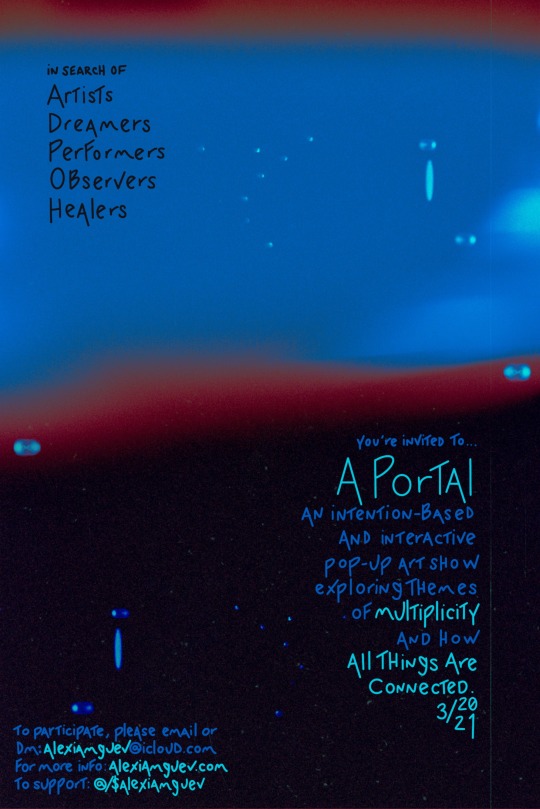
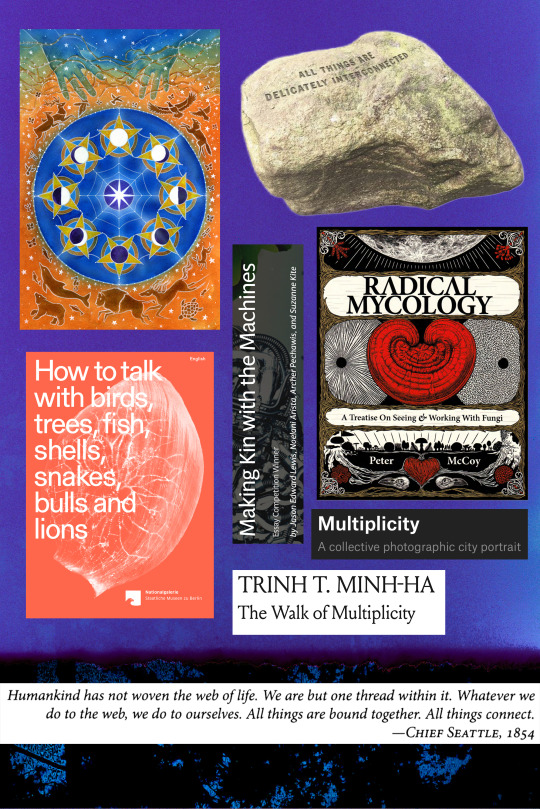
💌 You’re invited to a Portal
A Portal is an intention-based and interactive pop-up art show. We will be exploring themes of Multiplicity and how All Things Are Connected.
Opening reception will take place in March of 2021 in the Orlando area. (Following all regulations and encouraging testing beforehand). More information to RSVP to come!
This is an Open Call for local or remote artists, dreamers, performers, observers, and healers. Open Call closes January 11th. DM or email me if you would like to participate in your own way, want to create a piece, or have works you’d like to showcase that fits the theme. Any medium encouraged. <3
Slide 2 consists of research that has inspired the direction of this Portal.
- Eight of Pentacles by Cathy McClelland; http://www.cathymcclelland.com
- “All things are delicately interconnected” by Jenny Holzer; https://projects.jennyholzer.com
- How to talk to birds, trees, fish, shells, snakes, bulls and lions. An exhibition by Antje Majewski with Agnieszka Brzeżańska & Ewa Ciepielewska, Carolina Caycedo, Paweł Freisler, Olivier GuesseléGarai, Tamás Kaszás, Paulo Nazareth, GuaraniKaiowa & Luciana de Oliveira, Issa Samb, Xu Tan, and Hervé Yamguen; https://arena-attachments.s3.amazonaws.com/3439386/556dad77118524da6a7f15ad06571244.pdf?1547838065
- Making Kin with Machines by Jason Edward Lewis, Noelani Arista, Archer Pechawis, and Suzanne Kite; https://jods.mitpress.mit.edu/pub/lewis-arista-pechawis-kite/release/1
- Radical Mycology by Peter McCoy
- Multiplicity: A collective photographic city portrait by Moritz Stefaner; https://truth-and-beauty.net/projects/multiplicity
- The Walk of Multiplicity by Trinh T. Minh-ha; https://monoskop.org/images/f/f5/Minh-ha_Trinh_T_The_Walk_of_Multiplicity_2019.pdf
Both slide 1 and 2 were repurposed light leak film shots of mine and I love how they turned out. Thank you to Maria for adding the writing to slide 1: @ dogisgodbackwardsforareason @ mariachencinski on Instagram. I love you!
So much gratitude to the following for inspiration/research of this Portal:
@ are.na on Instagram; https://www.are.na
@ sighswoon on Instagram
@ STH on instagram
@ schoolimaginary on Instagram; https://imaginaryschool.com
@ randonautica on Instagram; https://www.randonautica.com
Happy Winter Solstice, 2020
8 notes
·
View notes
Text
A
Adolf-Wuerth-Center for the History of Psychology
Archives of the History of American Psychology
Associationism
B
Henri-Étienne Beaunis
The Behavior of Organisms
Henri Bergson
Berlin School of experimental psychology
Beyond the Pleasure Principle
C
Characterology
Choiceless awareness
Civil Resettlement Units
Civilization and Its Discontents
Classical conditioning
A Clinical Lesson at the Salpêtrière
Cognitive revolution
Bertram Cohler
D
Decade of Behavior
Degeneration theory
History of dyslexia research
E
Eastern philosophy in clinical psychology
Ecstasy (emotion)
Edinburgh Phrenological Society
History of emotions
Empirical psychology
Evaluative conditioning
The Expression of the Emotions in Man and Animals
Extraordinary Popular Delusions and the Madness of Crowds
F
Faculty psychology
Family romance
Freud's seduction theory
The Freudian Coverup
Functional psychology
G
Genetic epistemology
Genetic Studies of Genius
Graz School
Grundzüge der physiologischen Psychologie
H
History of clinical psychological services in Singapore
History of electroconvulsive therapy in the United States
History of Psychology (journal)
History of the race and intelligence controversy
Hysteria
I
Idea
Identity (philosophy)
Instincts of the Herd in Peace and War
Intentionality
The Interpretation of Dreams
J
Karl Jaspers
Julian Jaynes
L
Law of effect
Gustave Le Bon
Gottfried Wilhelm Leibniz
Little Albert experiment
M
Cäcilie M.
Meditation
Milgram experiment
Mind
Mind–body dualism
Mind–body problem
N
Neutral stimulus
Noogenesis
Max Nordau
Nous
O
Anna O.
Oneirocritica
Operant conditioning
P
Perception
Philosophische Studien
Phrenology
Point of view (philosophy)
Posttraumatic stress disorder
The Principles of Psychology
Psychopathia Sexualis (Kaan book)
History of psychotherapy
The Pursuit of the Millennium
Q
Qualia
R
Radical behaviorism
Riverview Psychiatric Center
Rosenhan experiment
S
School of Brentano
Stanford prison experiment
Stoelting
T
Tabula rasa
Terror management theory
Theory of mind
Thought
Timeline of psychology
Timeline of psychotherapy
V
Variability hypothesis
The Varieties of Religious Experience
Verbal Behavior
Virtual Laboratory
Vygotsky Circle
W
War Office Selection Boards
William James Lectures
Activity-oriented approach
Analytical psychology
Anti-psychiatry
Anomalistic psychology
Associationism
Behaviorism (see also radical behaviorism)
Behavioural genetics
Bioenergetics
Biological psychology
Biopsychosocial model
Cognitivism
Cultural-historical psychology
Depth psychology
Descriptive psychology
Developmental psychology
Ecopsychology
Ecological psychology
Ecological systems theory
Ego psychology
Environmental psychology
Evolutionary psychology
Existential psychology
Experimental analysis of behavior - the school descended from B.F. Skinner's work.
Functionalism
Gestalt psychology
Gestalt therapy
Humanistic psychology
Individual psychology
Industrial psychology
Liberation psychology
Logotherapy
Organismic psychology
Organizational psychology
Phenomenological psychology
Process Psychology
Psychoanalysis
Psychohistory
Radical behaviorism - often considered a school of philosophy, not psychology.
Psychology of self
Social psychology (sociocultural psychology)
Strength-based practice
Structuralism
Systems psychology
Transactional analysis
Transpersonal psychology
→
Basic psychology
• ◦ AbnormalAffective scienceAffective neuroscienceBehavioral geneticsBehavioral neuroscienceBehaviorismCognitive/CognitivismCognitive neuroscience SocialComparativeCross-culturalCulturalDevelopmentalDifferentialEcologicalEvolutionaryExperimentalGestaltIntelligenceMathematicalMoralNeuropsychologyPerceptionPersonalityPositivePsycholinguisticsPsychophysiologyQuantitativeSocialTheoretical
Applied psychology
• AnomalisticApplied behavior analysisAssessmentClinicalCoachingCommunityConsumerCounselingCriticalEducationalErgonomicsFeministForensicHealthIndustrial and organizationalLegalMediaMedicalMilitaryMusicOccupational healthPastoralPoliticalPsychometricsPsychotherapyReligionSchoolSport and exerciseSuicidologySystemsTraffic
Methodologies
• Animal testingArchival researchBehavior epigeneticsCase studyContent analysisExperimentsHuman subject researchInterviewsNeuroimagingObservationPsychophysicsQualitative researchQuantitative researchSelf-report inventoryStatistical surveys
Psychologists
• Wilhelm Wundt (1832–1920)William James (1842–1910)Ivan Pavlov (1849–1936)Sigmund Freud (1856–1939)Edward Thorndike (1874–1949)Carl Jung (1875–1961)John B. Watson (1878–1958)Clark L. Hull (1884–1952)Kurt Lewin (1890–1947)Jean Piaget (1896–1980)Gordon Allport (1897–1967)J. P. Guilford (1897–1987)Carl Rogers (1902–1987)Erik Erikson (1902–1994)B. F. Skinner (1904–1990)Donald O. Hebb (1904–1985)Ernest Hilgard (1904–2001)Harry Harlow (1905–1981)Raymond Cattell (1905–1998)Abraham Maslow (1908–1970)Neal E. Miller (1909–2002)Jerome Bruner (1915–2016)Donald T. Campbell (1916–1996)Hans Eysenck (1916–1997)Herbert A. Simon (1916–2001)David McClelland (1917–1998)Leon Festinger (1919–1989)George A. Miller (1920–2012)Richard Lazarus (1922–2002)Stanley Schachter (1922–1997)Robert Zajonc (1923–2008)Albert Bandura (b. 1925)Roger Brown (1925–1997)Endel Tulving (b. 1927)Lawrence Kohlberg (1927–1987)Noam Chomsky (b. 1928)Ulric Neisser (1928–2012)Jerome Kagan (b. 1929)Walter Mischel (1930–2018)Elliot Aronson (b. 1932)Daniel Kahneman (b. 1934)Paul Ekman (b. 1934)Michael Posner (b. 1936)Amos Tversky (1937–1996)Bruce McEwen (b. 1938)Larry Squire (b. 1941)Richard E. Nisbett (b. 1941)Martin Seligman (b. 1942)Ed Diener (b. 1946)Shelley E. Taylor (b. 1946)John Anderson (b. 1947)Ronald C. Kessler (b. 1947)Joseph E. LeDoux (b. 1949)Richard Davidson (b. 1951)Susan Fiske (b. 1952)Roy Baumeister (b. 1953)
Lists
• Counseling topicsDisciplinesImportant publicationsOrganizationsOutlinePsychologistsPsychotherapiesResearch methodsSchools of thoughtTimelineTopics
5 notes
·
View notes